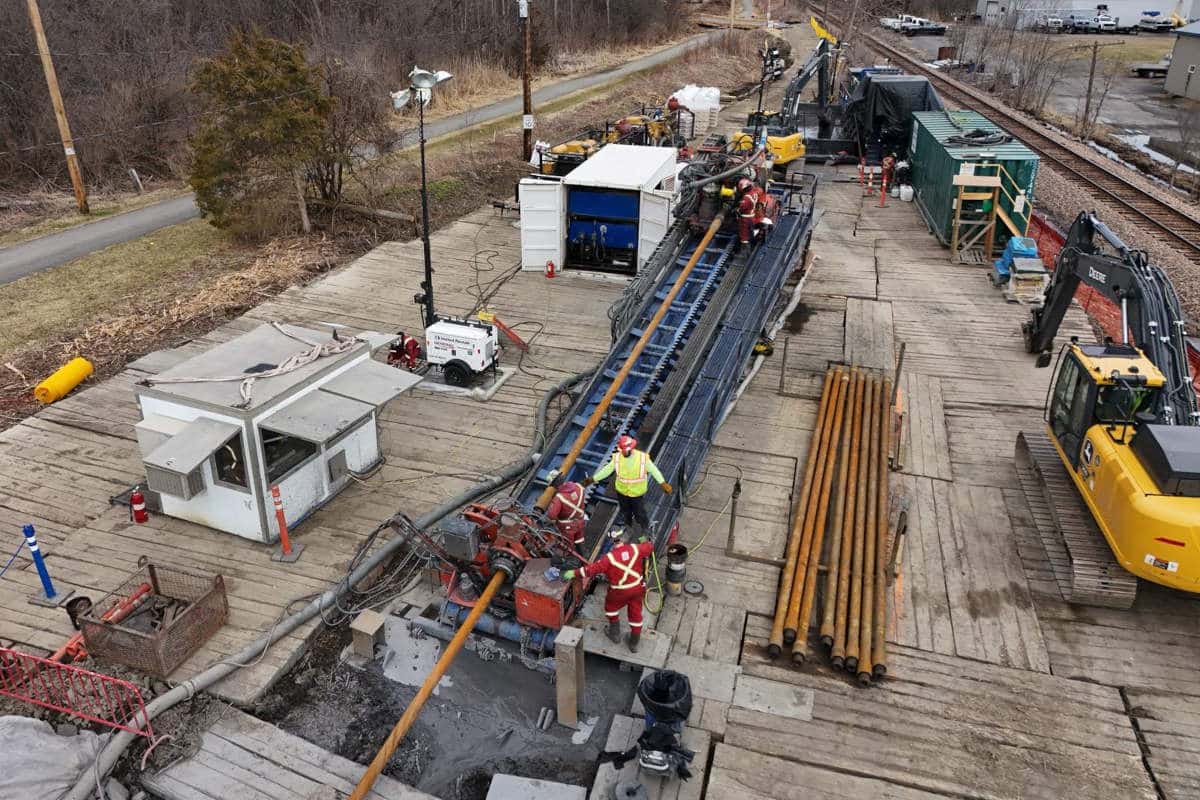Drill Master: You Can Lead a Horse to Water but You Can’t Make It Drink
June 1, 2008
Even though it is only 18 years old, the HDD industry has greatly matured. Tremendous progress has been made in HDD technology, equipment and operating techniques and in the acceptance of HDD as a viable construction method. The early struggles of the HDD industry have been worked through and many solutions have proven to be effective. The first boom-and-bust cycle has been experienced, weathered and put in the history books.
Currently we are in the midst of a second boom that has seen great improvement due to, in part, the experiences learned during the first bust. Contractors who survived have proven to be more in tune with being successful, and many plant owners have accepted the technology as the preferred way of installing their product.
So, you could say that all is well in the HDD industry, but we still face many challenges — one being the proper uses and application of drilling fluids. It seems as though when we begin to address this issue, many go into a trance that looks a little like Charlie Brown listening to his schoolteacher. Why are contractors and operators so disinterested in drilling fluids? Is it a case of out of sight, out of mind? The answer is elusive but it can mean all the difference between a highly successful and a moderately successful — or completely unsuccessful — installation.
Or, to put it into contractor English: the difference between making money and losing money.
It’s hard to understand why companies fail to make a commitment to proper drilling fluids. In a typical scenario, when a contractor gets in trouble he calls a “drilling fluid doctor” to help him out. In a high percentage of cases, this leads to a successful installation. Yet some of these same contractors who witness the benefits of proper drilling fluid often revert to using substandard fluids in later operations, ignoring drilling fluids and the same problems arise again.
To shed light on this subject and hopefully convince many to look at the positive impact of proper drilling fluid on their bottom line, we offer the following five-step guide:
Make a company commitment to consistently utilize proper drilling fluids. By enacting practices and policies that build a successful attitude among your crews, success will follow.
Lay the foundation for winning drilling fluids. Start with a current fluid-mixing system that incorporates everything learned in this industry over the last two decades. Finish the foundation by preparing the makeup water for success (i.e., testing the pH and adding soda ash to get the pH correct for the chemicals you are going to add to make up the drilling fluid). This practice costs mere pennies and takes almost no time to perform, yet is one of the most important things you can do. How many buildings are built without a foundation? None that stay up.
Know your soil before you bore. Use all geological information available to you. An easy way to acquire this information is to dig a test pit to your planned boring depth. Most likely you will need tie-in pits, so pre-digging them can help the process. Make drilling-fluid decisions based on the soil types.
Inventory a reasonable variety of drilling-fluid additives on your jobsites. When a drilling fluid failure occurs, the excuse is usually “we didn’t have any product with us.” Use products designed for HDD installations. Vertical drilling products are not designed to work in a horizontal plane. Lean on your distributors to keep their inventory up to date.
Patience. Wait for your drilling fluid to be completely mixed prior to starting the bore. Use the proper fluid on the pilot bore, as well as the backream. Both are equally important. Analyze your returns for changes in soil structure and adjust the drilling fluid mixture if needed. Do not outrun your fluid — it is a hydraulic conveyance system that prepares the bore-path for the product you’re installing. Plan for a plentiful supply of makeup water so the job is never shut down waiting for fluid. The same goes for disposal of the drilling fluid: make sure your capacity for hauling it away does not shut you down.
This is only an abbreviated look at successful fluids. It is highly recommended that all crewmembers and company owners be trained in the application of drilling fluids to ensure an equal level of understanding across each organization. You can start with your equipment supplier or your drilling fluid supplier for more information. Doing this will help address one of the pitfalls in our industry and help you achieve better bottom-line performance.
Richard Levings is senior product manager of HDD products at Ditch Witch. Tom Tibor is an account representative at Baroid Industrial Drilling Products. All reports are reviewed by the board: Levings; Frank Canon, Baroid Industrial Drilling Products; Ron Lowe, Myers-Aplex Industries; Ed Savage, Vermeer Corp.; and Trevor Young, Tulsa Rig Iron.




